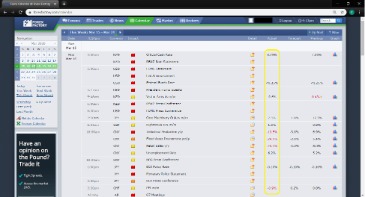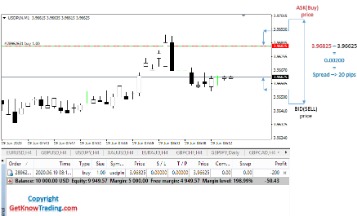
On the chart, you will see many colorful lines illustrating different price action patterns. The double top that came in the form of a bearish engulfing candlestick gave us that added confirmation that we really did see a top of some sort. The most important aspect of the bearish Harami is that prices gapped down on Day 2 and were unable to move higher back to the close of Day 1. The Bullish Harami pattern occurs after a downtrend and becomes more significant the more the market has gone down.
The word harami comes from an old Japanese word meaning pregnant. But before we dive into the past performance of this bullish harami pattern, let’s learn how to identify it on our candlestick charts. Traders looking to take advantage of the Bearish Harami pattern can add it into any existing trend trading plan. Traders can look to take profits on any existing long trades, or even consider trading a full out reversal once this pattern appears. Regardless of the trading plan, when adding new components to a strategy traders should be tracking results with a trade journal.
Affle, Ircon among 4 stocks which have formed Bullish Harami Cross Candlestick pattern – The Economic Times
Affle, Ircon among 4 stocks which have formed Bullish Harami Cross Candlestick pattern.
Posted: Wed, 14 Jun 2023 07:00:00 GMT [source]
A candlestick chart typically represents the price data of stock on a single day, including opening price, closing price, high price, and low price. In Chart 2 above, a buy signal could be triggered when the day after the bullish Harami occurred, the price rose higher and closed above the downward resistance trendline. A bullish Harami pattern and a trendline break is a combination that could result in a buy signal.
What is a Harami Candle?
The second candle, the doji, has a narrow range and opens above the previous day’s close. The doji must be completely contained with the real body of the previous candle. A harami cross is a Japanese candlestick pattern that consists of a large candlestick that moves in the direction of the trend, followed by a small doji candlestick.
This trade brought us a profit of $.77 cents per share in less than an hour. However, the blue lines at the end of the chart show how the price confirms a double bottom pattern. The double bottom is an early indication that price is likely to stabilize and lead to a potential rally. Mr. Pines has traded on the NYSE, harami candle CBOE and Pacific Stock Exchange. In 2011, Mr. Pines started his own consulting firm through which he advises law firms and investment professionals on issues related to trading, and derivatives. Lawrence has served as an expert witness in a number of high profile trials in US Federal and international courts.
Which candlestick pattern is most reliable?
The risk-averse will initiate the trade the day near the close of the day after P2, provided it is a blue candle day, which in this case is. In a downtrend, it means that sellers have failed to close the second candlestick near the low of the previous candlestick. In an uptrend, it means that buyers have failed to follow up on the surge of activity and close the second candlestick at or near the high of the previous candlestick. The Harami is a trend reversal pattern and must appear in an existing trend. The absence of a real body after a strong move indicates that the previous trend is coming to an end, and a reversal may occur.
- Analysts looking for fast ways to analyze daily market performance data will rely on patterns in candlestick charts to expedite understanding and decision-making.
- A red Marubozu candle indicates that sellers controlled the price from the opening bell to the close of the day so it is considered very bearish.
- Then, a shorter bearish candle appears, enclosed within the body of the previous candle, forming a Bearish Harami pattern.
- Where the first candle shares the preceding candles’ bearish sentiment, the second candle flips and begins the chart’s newest uptrend.
There were not sufficient pieces of evidence, and the stock price did not fall. If you are short in situations like the above, put a stop loss above the harami structure. Then to exit the trade, we’ll wait for the RSI to cross above 50. We’ve had some very good experiences with it in our other strategies. As such, we might want to introduce some type of filter that tells us when the market is oversold and likely to bounce back. However, when the market opens the next day, it does so with a positive gap.
Contents
For example, if the volume of the bearish candle is very high, it might indicate a final blowoff, as we talked about before. As the name suggests, the bullish harami is a bullish pattern appearing at the bottom end of the chart. The bullish harami pattern evolves over a two day period, similar to the engulfing pattern. A Bullish Harami Candle pattern indicates a possible reversal from bearish to bullish momentum. If you’re interested in mastering some simple but effective swing trading strategies, check out Hit & Run Candlesticks. We look for stocks positioned to make an unusually large percentage move, using high percentage profit patterns as well as powerful Japanese Candlesticks.
When you spot a Harami candlestick pattern, the key here is to use the moving average to set an entry point. The lack of a real body after a strong move in the prior candle tells us with more certainty that the previous trend is coming to an end and that a reversal may be at hand. The Harami candlestick pattern is usually considered more of a secondary candlestick pattern. These are not as powerful as the formations we went over in our Candlestick Patterns Explained article; nonetheless, they are important when reading price and volume action.
Anyway, if you sell in situations like this, put a stop-loss above the pattern. As we can see after the harami pattern, the bullish momentum started and market moved up. The bearish mean reversion trading setup is the mirror opposite of its bullish brethren. Once the trade has been initiated, the trader will have to wait for either the target to be hit or the stop loss to be triggered.
Strategy 3: Bullish Harami and Moving Average
If it does, there is a greater chance of a larger price move to the upside, especially if there is no nearby resistance overhead. It’s essential to understand the differences between these similar patterns when using candlestick pattern technical analysis. The bullish harami belongs to the category of most popular candlestick patterns and is relied upon by many traders in their analysis of the markets. Here is a chart below where the encircled candles depict a bullish harami pattern, but it is not. The prior trend should be bearish, but in this case, the prior trend is almost flat, which prevents us from classifying this candlestick pattern as a bullish harami. A proper education in price action wouldn’t be complete without understanding when, how, and where to go long on a stock.
- Harami candles are a type of candlestick pattern that can be used to predict future price movements in the market.
- Typically, traders don’t act on the pattern unless the price follows through to the upside within the next couple of candles.
- As such we may earn a commision when you make a purchase after following a link from our website.
- Some traders may opt to enter positions once the harami cross appears.
Typically, traders don’t act on the pattern unless the price follows through to the upside within the next couple of candles. Sometimes the price may pause for a few candles after the doji, and then rise or fall. A rise above the open of the first candle helps confirm that the price may be heading higher. If the price moves in your favor, follow the retracement with the Fibonacci levels. Similarly, close the position when the price breaks a key Fibonacci support level or when the exponential moving average is broken in the opposite direction of the primary trend. In addition, with the next two red candles we confirm a Three Black Crows candle pattern, shown in the green circle.
Prior to making any decisions, carefully assess your financial situation and determine whether you can afford the potential risk of losing your money. Once you receive this additional signal, open a trade – a short position in our case. Then you can stay in the market until you get a contrary signal from the oscillator at the other end of the trade. If you use the money flow or the price oscillator, the chance to match a Harami with an overbought/oversold signal is minimal. The stochastic oscillator on the other hand is great for trading haramis.

The price continued lower for a couple of weeks before reversing and then breaking above the resistance level. Then you will have confidence to take the trade knowing your ratio of wins https://g-markets.net/ to losses. Now that we are short Citigroup, we wait for an opposite signal from the stochastic. 5 periods later, the blue stochastic line hops into the oversold area for a moment.
Bullish Engulfing vs. Bullish Harami
This candle is followed by an opposing price period, where sentiment is centered in the opposite direction. Some traders may opt to enter positions once the harami cross appears. If entering long on a bullish harami cross, a stop loss can be placed below the doji low or below the low of the first candlestick. A possible place to enter the long is when the price moves above the open of the first candle.